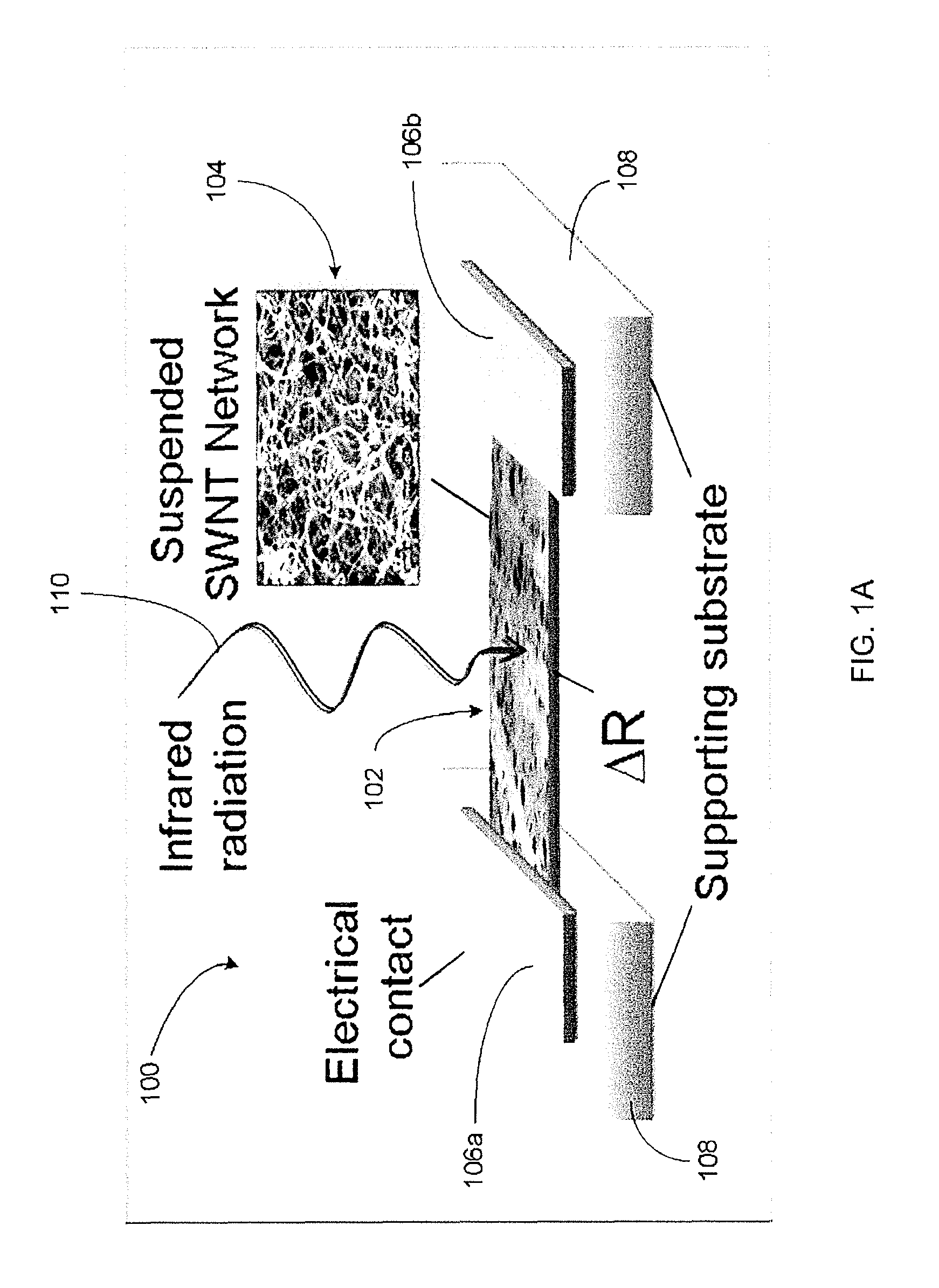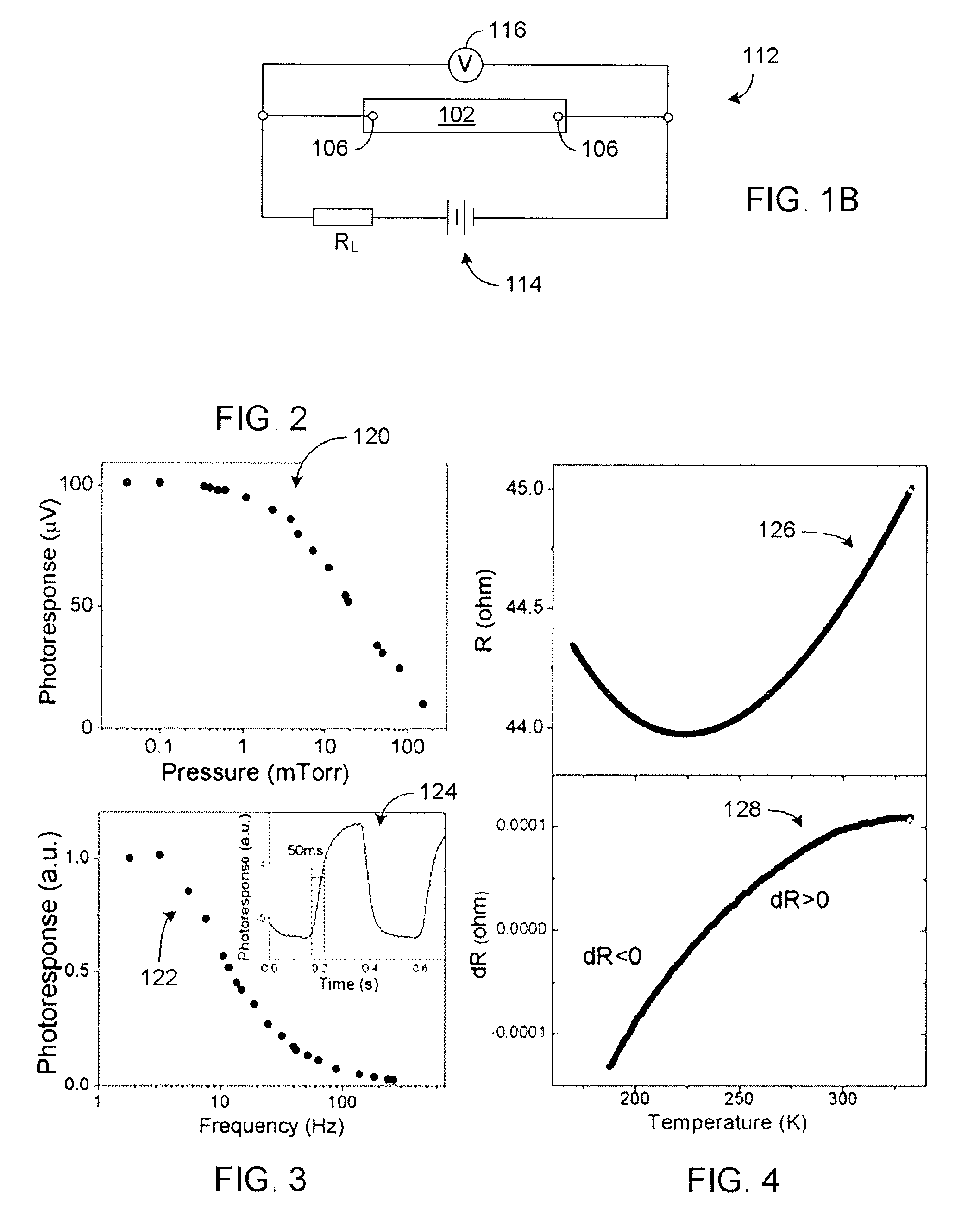Carbon nanotube based detector
a detector and carbon nanotube technology, applied in the field of carbon nanotubes, can solve the problems of difficult to develop large area uniform imaging arrays, hgcdte and corresponding systems have various undesirable properties, and the operation of hgcdte detectors at 77k, which may not be desirable under certain circumstances
- Summary
- Abstract
- Description
- Claims
- Application Information
AI Technical Summary
Problems solved by technology
Method used
Image
Examples
Embodiment Construction
[0034]The present disclosure generally relates to carbon nano structures. In some embodiments, such nano structures can be utilized as to form detector elements. In some embodiments, such nano structures can include carbon nanotube structures. In some embodiments, such carbon nanotube structures can include a plurality of single-walled carbon nanotubes (SWNTs) arranged in a network so as to allow receiving of incident energy and / or radiation power and respond in a bolometric manner. For the purpose of description, “incident energy” and “incident radiation power” may be used interchangeably. For the purpose of description, “bolometric” will be understood to mean a change in temperature in the SWNT network in response to at least a partial absorption of the incident radiation power. In some embodiments, such temperature change can be measured electrically so as to function as a detector.
[0035]Various embodiments of the bolometric based detectors are described in terms of SWNTs. Howeve...
PUM
| Property | Measurement | Unit |
|---|---|---|
| thickness | aaaaa | aaaaa |
| temperature | aaaaa | aaaaa |
| pressure | aaaaa | aaaaa |
Abstract
Description
Claims
Application Information
 Login to View More
Login to View More - R&D
- Intellectual Property
- Life Sciences
- Materials
- Tech Scout
- Unparalleled Data Quality
- Higher Quality Content
- 60% Fewer Hallucinations
Browse by: Latest US Patents, China's latest patents, Technical Efficacy Thesaurus, Application Domain, Technology Topic, Popular Technical Reports.
© 2025 PatSnap. All rights reserved.Legal|Privacy policy|Modern Slavery Act Transparency Statement|Sitemap|About US| Contact US: help@patsnap.com



